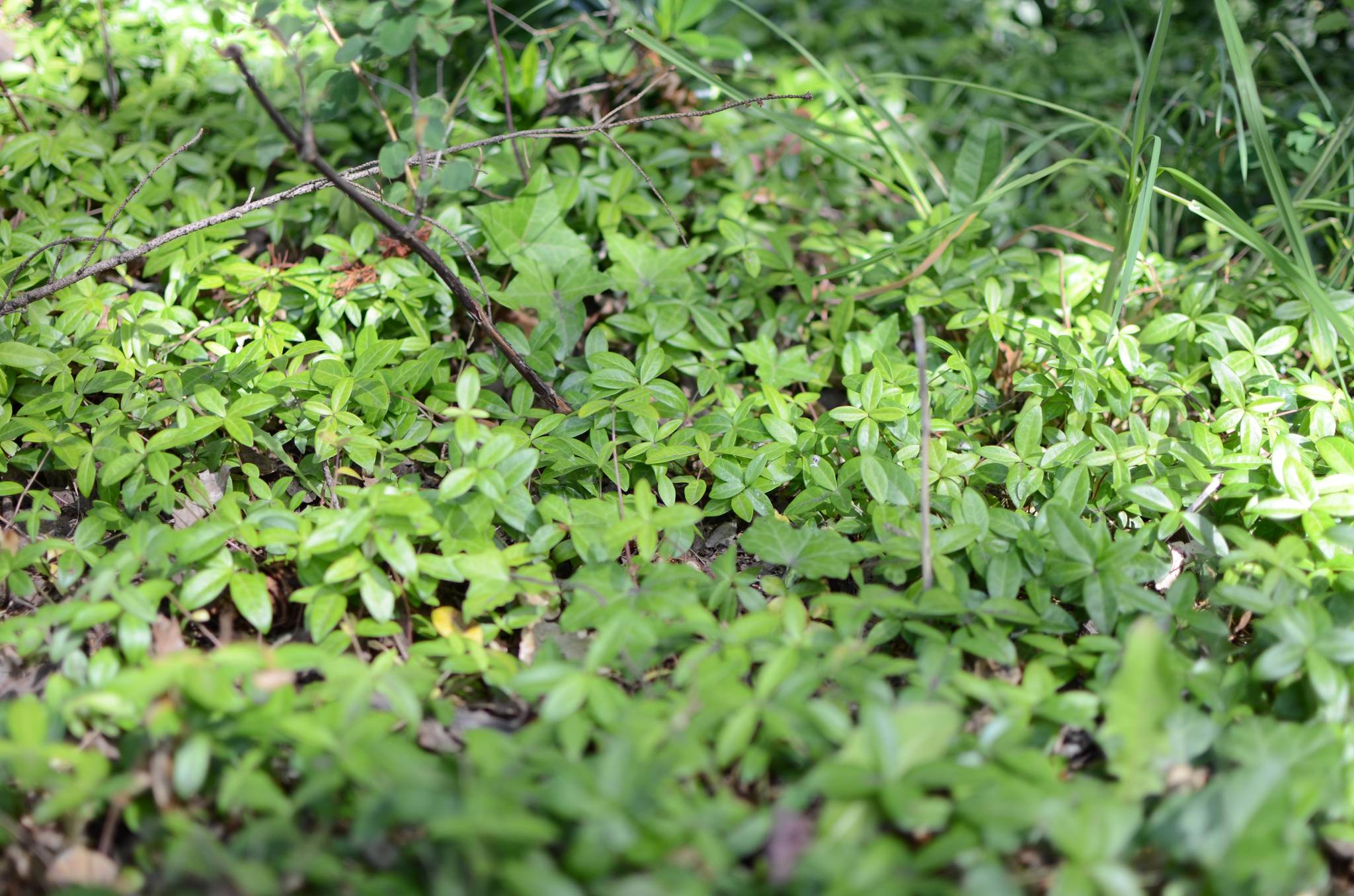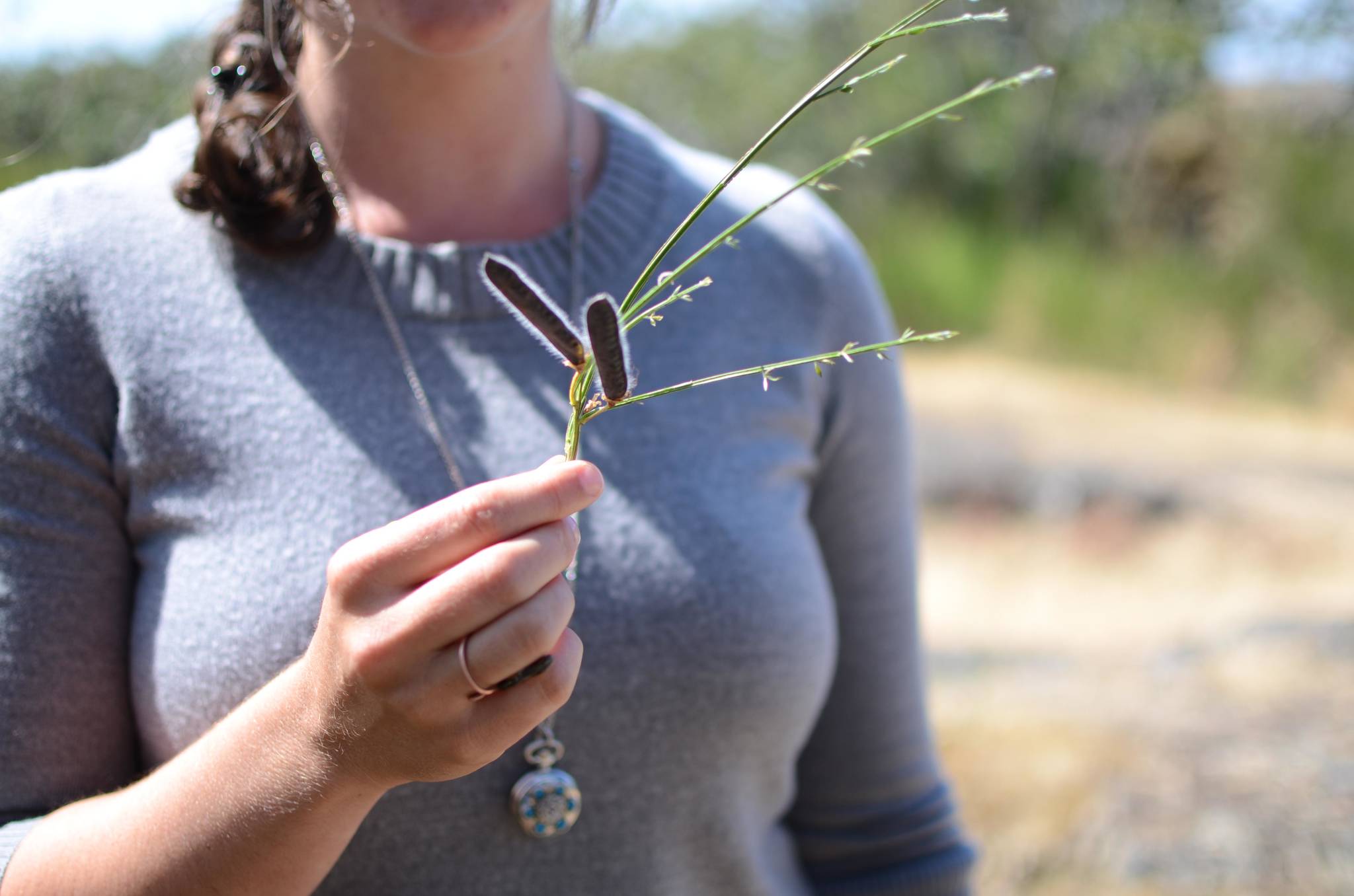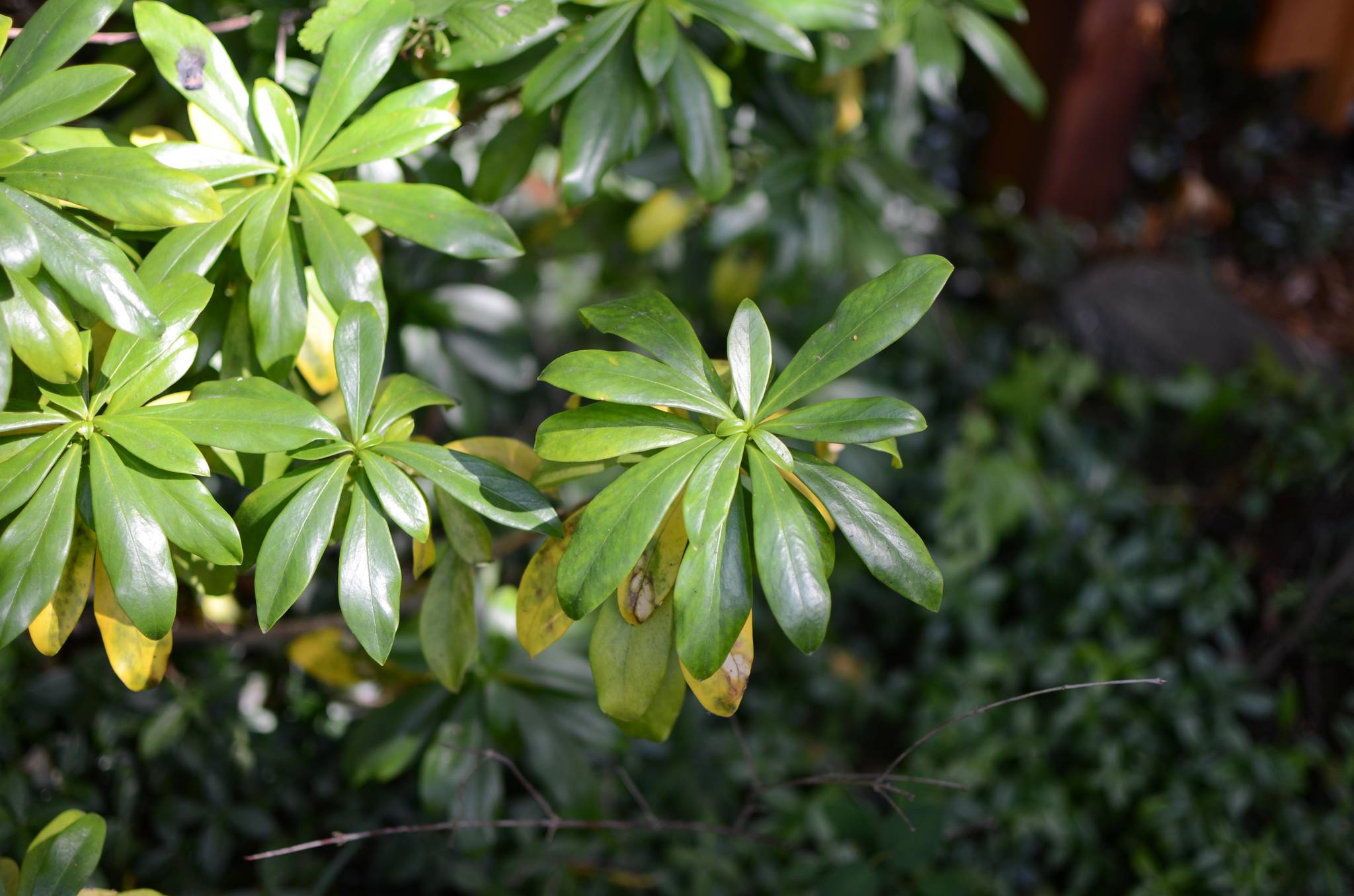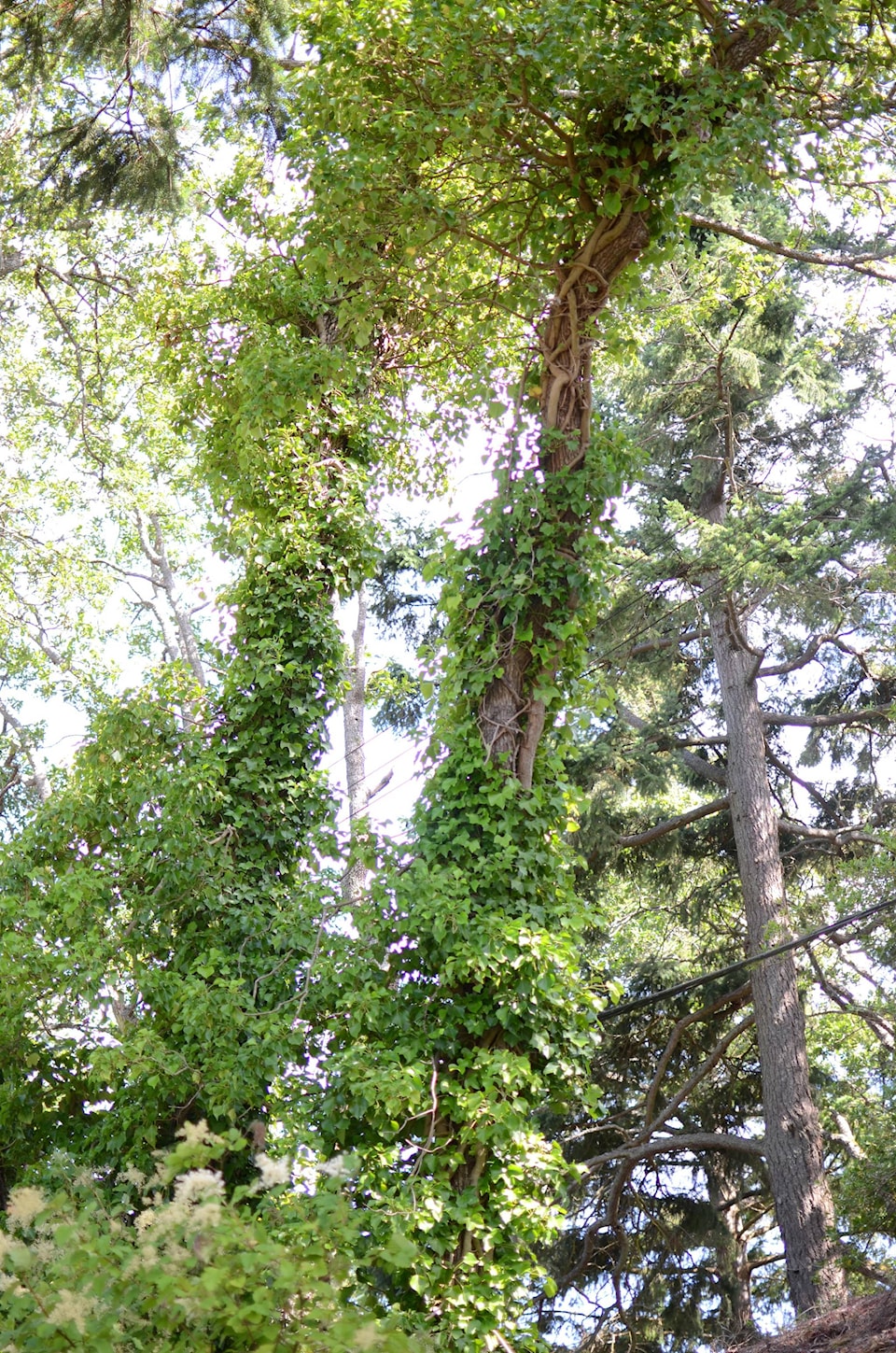Got invaders in your backyard? Torrey Archer, Covenant Manager at The Land Conservancy of BC, says that while English ivy and periwinkle can be beautiful backyard plants, and while rumours abound about Scotch Broom’s benevolent nitrogen-fixing capabilities, these species can strangle and shade out the life around them - including Oak Bay gardens and fragile Garry Oak ecosystems.
“English ivy is gorgeous. It has a very fanciful look to it. It grows up over everything,” says Archer. She suggests that on rock walls, this growth may not be so damaging, but the climbing plant is prone to strangling other native plants, garden plants and trees.
Trees climbed by English ivy pose the highest risk to homeowners. “The ivy’s roots will grow into the bark, and this creates infection sites for pests and pathogens. The tree will eventually become strangled by it,” Archer says. Because trees rely on their trunks to carry water and nutrients, the strangulating ivy cuts off the tree’s circulatory system. “If you have trees hanging over your house and you have all this ivy on it, it looks beautiful, but it’s actually in danger of falling on your house.” Archer recommends always checking with an arborist about trees covered in ivy, but removing the invasive plant is the best course of action.
“When you do remove ivy from a tree, it’s called the life-saver method,” Archer says, simply because the removal ring created resembles a life-saver candy. “You clip the ivy a couple of feet above the soil, on the tree trunk itself.” Remove only one to two feet of the ivy, clearing a ring around the tree that is free of the vine. “From there, don’t pull the ivy off the bark. You’ll either pull bark off as well, or open up those sites for more infection,” Archer warns. Leave the ivy on the tree and everything above the ring will wither.
As for the vine still alive at ground level, Archer suggests hacking it to the ground. “For ground removal, you can pull it out with your hands because there are no spikes or thorns. It’s also very satisfying, because you’ll see a real difference after you’ve worked for just an hour.”
English ivy is a persistent problem because, despite human intervention, birds eat the berries and disperse the seeds in nearby areas. Archer says, “You have to not hope for immediate success. It’s on ongoing battle. Pick away at it year after year because it’s worthwhile.”
A horizontal lookalike of English Ivy, periwinkle is a ground cover that doesn’t reach more than four to six inches in height, but presents similar suffocating risks. The colour periwinkle was named after the plant, which blossoms in flowers of the same light violet-blue.
“The problem with periwinkle is that, like ivy, it’s often sold in stores,” Archer says. “It will displace anything in its way.”
Many gardeners become frustrated with periwinkle because of its fast-travelling tendencies, which prompts them to pull up the plant and throw it in the compost. Archer warns against this, as the compost becomes “an invasive species dispersal vector.” The same goes for dumping the plant roadside. “Out in Sooke, someone dumped periwinkle on the side of the road and it went through the ditch, up into the forest and now it’s blanketed 45 square meters of forest. It’s making its way down the hill to the creek,” Archer says. Once at the creek edge, periwinkle forms a dense mat of roots above ground rather than below, contributing to soil erosion. With soil erosion comes turbid creek water, which is inhabitable for fish.
“It’s all these cascading effects you wouldn’t even think of from this pretty little plant,” Archer says.
She points to Scotch broom and daphne laurel as two other controversial plants which are often more damaging than expected.
Those who have planted rhododendrons in their own gardens, but don’t remember planting a rhododendron in a certain area, are likely dealing with an invasion of daphne laurel.
One way to recognize the plant is by its single stem, different than the rhododendron spray. Another way is by its pungent and toxic gas, which can be a serious health risk for people and pets. “Some people even get blisters from the juices,” Archer says. When pulling the plant for removal, wear gloves. Archer adds, “If you’re removing a bunch of it, do not transport it to a landfill in a closed car, because those noxious fumes are not good for you.” Wrap the plant in plastic bags and close it in the trunk before driving.
Scotch broom is popular on Vancouver Island, though it most often grows on roadsides and other open areas. The plant propagates by seed, blossoming in bright golden flowers April and May. While the flowers may be pretty, the pollen agitates hay fever and the plant cuts off native species’ sunlight exposure.
Archer adds that Scotch broom’s ability to fix atmospheric nitrogen has made it appear, at face-value, better than it is for our ecosystems.
“Scotch broom has a symbiotic relationship with the bacteria that breaks down other forms of nitrogen into a readily available one [for plants].” This nitrogen can be transferred into the soil for other plants to use; however, Archer says, those “other plants” are not often native species. “Broom shares its nitrogen with other broom,” she says, due to the fact that any native species close by broom are soon killed by the lack of sun exposure anyway.
Archer abides by the rule “cut broom in bloom.” When pulled or chopped off at the root crown, the plant does not have enough juice to sprout again. Additionally, it is not in seed at this time. If removal is attempted while the broom is in seed, Archer says, “the seeds will burst ands carter in the air, and you have a way bigger problem.” It is best to wait for fall or the following spring, when the plant is no longer in seed and the soil is wet enough for removal. Fall is an optimal time for any removal, as this is often burn season and presents a mess-free way to stop the spread of broom.
“Don’t pull the broom out if the stem is thicker than your finger, the reason being you could disturb a lot of the soil doing so,” Archer says. “That brings a lot of the seeds to the surface, where they germinate.” Archer suggests chopping the broom at the root crown instead, which is soil level.
Other invasive species to look out for include:
Himalayan blackberry
English holly
Bachelors button
False lamium, also known as yellow archangel
Butterfly bush
Giant hogweed, also known as cow parsnip
Gorse
Giant knotweed
Purple loosestrife
St. John’s wort
Yellow flag iris
Policeman’s helmet
Torrey Archer and volunteers with The Land Conservancy of BC remove invasive species from covenants, roadsides and parks.
editor@oakbaynews.com



